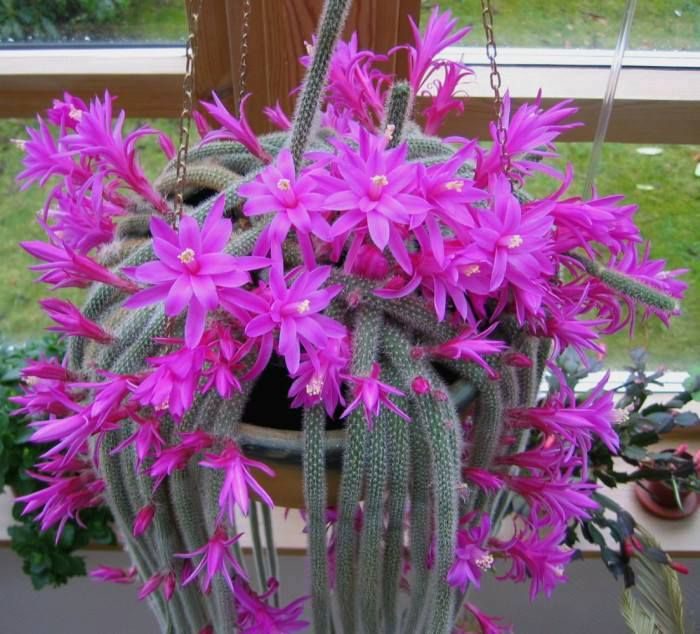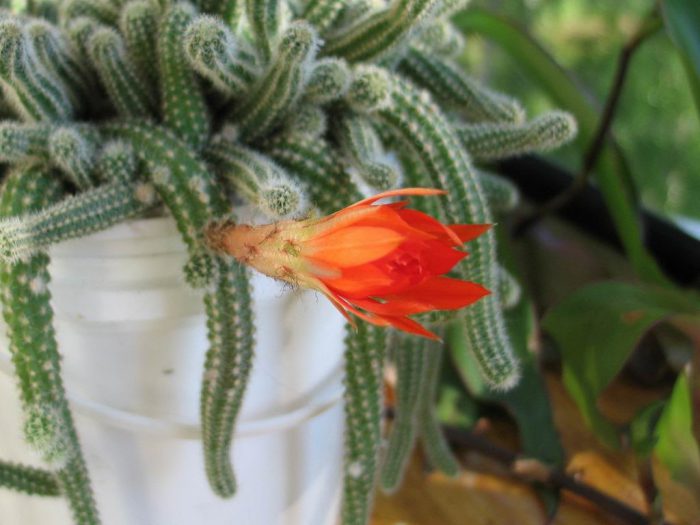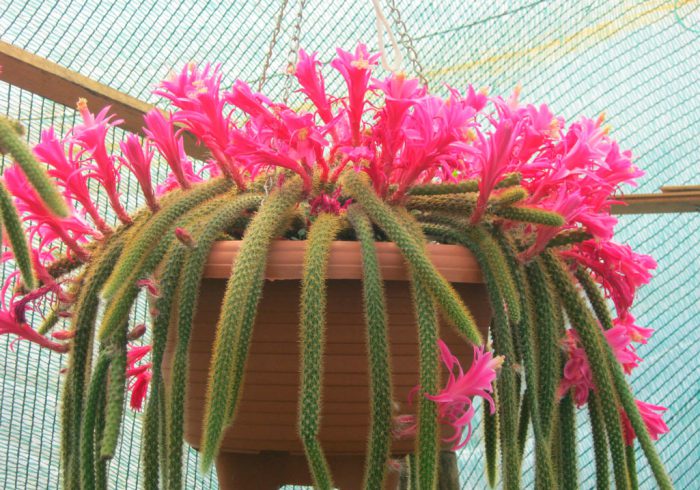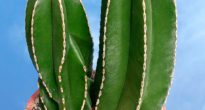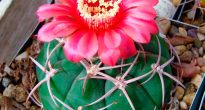An epiphytic plant like aporocactus (Aporocactus) is directly related to the cactaceae family (Cactaceae). In nature, you can meet in Mexico. It prefers to grow on rocky slopes, while with its shoots it clings to branches of trees and shrubs, and to rocky ledges. You can often come across mighty thickets hanging down.
This plant has a long stem, which grows up to 100 centimeters in length, and its diameter is 1.5-3 centimeters, and it is highly branched. On its surface, one can see thin, poorly visible ribs, on which short spines similar to bristles are located. Young cacti are distinguished by the fact that their stem grows up, after which it goes down in a loop. Shiny whips of a rich green color, eventually change their color to green-gray.
Tubular flowers are colored crimson or pink and reach 10 centimeters in length. The fruit is presented in the form of a round berry and red. On its surface is a layer of bristles.
Home care for aporocactus
Illumination
Needs bright lighting, but at the same time reacts negatively to direct sunlight. It is recommended to place it near windows of western or eastern orientation. If you put it on the south window, then at noon it will be necessary to shade the plant from the scorching rays of the sun. In winter, aporocactus should also receive a lot of light, since this has a direct effect on the formation of buds, as well as on the abundance of flowering.
Temperature regime
In spring and summer, the cactus feels good in warmth (from 20 to 25 degrees). At this time, it can be transferred to the street, but at the same time for its placement, you should choose a place shaded from the direct rays of the sun. In winter, it is moved to a cool (from 7 to 10 degrees) and bright room.
Humidity
He does not need high air humidity, but in the summer it is recommended to spray the cactus with lukewarm water. In winter, especially during cold wintering, spraying should not be carried out.
How to water
In the spring and summer period, watering should be abundant, but it is absolutely impossible to allow stagnation of water in the soil. The soil should be slightly damp all the time. Some time after watering, the drained liquid must be removed from the pan.In winter, watering should be reduced (especially with a cold winter). Watering is necessary only when the soil is completely dry.
Top dressing
Plants are fed from March to mid-summer once every 4 weeks. To do this, use special fertilizers for cacti. When flowering ends, the plant is no longer fed.
Transplant features
Young plants are transplanted once a year, and adults - once every 2 or 3 years. The pots should be low and fairly wide as the roots are close to the soil surface. Don't forget a good drainage layer.
Earth mix
Suitable soil should be permeable and loose. To prepare the land, it is necessary to combine leaf, turf and peat soil, as well as sand, taken in equal shares. You can use a commercially available cactus soil mix.
Reproduction methods
Can be propagated by seeds and cuttings
A sufficiently long lash is cut into cuttings, while each of the pieces should be 7 or 8 centimeters long. Cuttings should be left to dry for 7 days. After that, they must be planted in moist sand mixed with peat, deepening only 2 centimeters. Then they are tightly covered with glass and removed to heat (from 20 to 22 degrees). Rooted cuttings are planted in pots with a diameter of 7 centimeters.
Pests and diseases
Most often, nematodes settle on this cactus, scabbards and spider mites... Overfilling may cause fungal diseases.
Video review
Main types
Aporocactus Conzatti (Aporocactus conzattii)
In this plant, the whip-like creeping stems are painted in a rich green color. In diameter, they can reach from 2 to 2.5 centimeters. There are pronounced ribs (from 6 to 10 pieces) and tubercles are located on them. Yellowish spines in the form of needles reach 1 centimeter in length. The flowers are dark red.
Aporocactus lash-shaped (Aporocactus flagelliformis)
This plant has many thin hanging stems that can reach 100 centimeters in length, and their diameter is 1.5 centimeters. Small areoles and bristle-like spines of a brownish-yellow color are located on the less pronounced ribs. Zygomorphic flowers have a rich pink color and a beveled corolla, while their petals are bent towards the shoot. The fruit is presented in the form of a round red berry. A layer of bristles is located on its surface.
Aporocactus martianus
It has thin and very long shoots with eight low ribs, on the surface of which there are short grayish spines. The dark pink flowers are quite large (up to 10 centimeters in diameter).

